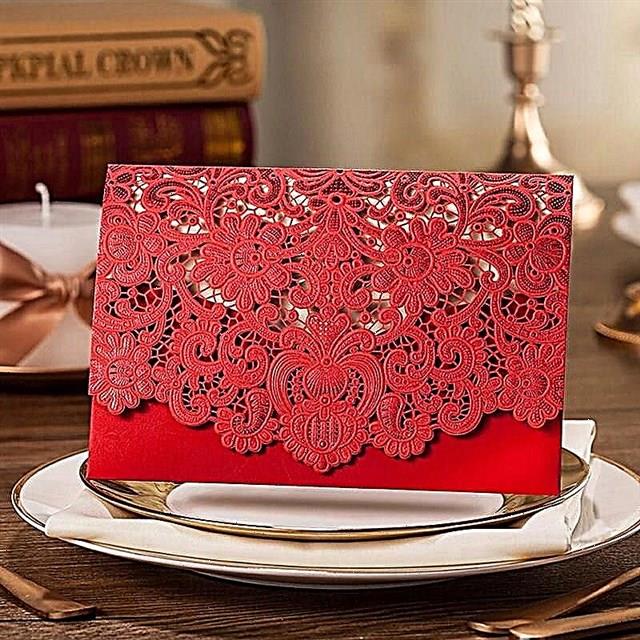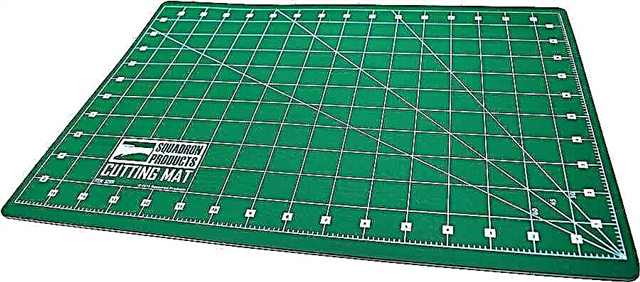The so-called 3D embroidery may seem complicated, but in practice you will only need perseverance, unhurriedness and a little practice.

Such a voluminous flower can become a brooch if you add it with a clasp, or a decorative element sewn onto the product, or part of an embroidered panel that combines voluminous and traditional embroidery - the choice is yours!
We embroider a decorative ornament using beads: 3 options
You will need:
Mouline thread of desired colors
- Floristic wire or bead wire (approximately 0.4 mm thick)
- Fabric (linen, cotton), preferably in a shade as close as possible to the main color of the petals
- Hoop
- Monofilament
- Beads
- Hand embroidery needle
- Needle for beads
Step 1

First of all, you need to draw a template - there’s nothing complicated, just draw a circle, divide it into three equal parts and sketch the petals. They do not have to be exactly the same, yet complete symmetry is not observed so often in wildlife.
Keep in mind: we need two such blanks.
Step 2

Wire is the magic tool that will allow us to further free embroidery from the hoop plane. We duplicate the contours of the pattern with wire, grabbing it with small and fairly frequent stitches - take a floss of the color that will be used on the outside of the petals.
Please note: we leave the tip of the wire at the very beginning with a margin - it will be more convenient in the future to “close” and fix our wire loop.
Moving forward, we bend the wire according to the shape of the contour, in the corners this can be done using pliers.

Having reached the final, we fasten the ends with several strong stitches and cut the wire.

Step 3
The outline is ready - but further embroidery methods vary depending on the preferences of the author and the goals of the work. We will consider one of the options in which the reverse side of the embroidery will look neater than with a number of other methods.
To do this, we have to sheathe the wire loop with a rather small looped seam. We use a mouline thread of the same color that grabbed the wire.

We sew the contour completely, trying to keep the seam tight, and the threads are quite tight.

Step 4
In this embroidery we will use two colors, lighter at the edges of the petals and darker closer to the base. If you have doubts about your eye, inside each petal, draw a border with a simple pencil in the transition of one color to another.

How to embroider: 13 ideas
Step 5
We turn to filling the petals. In this case, the embroidery was made by a mouline thread in three threads, but if you wish, you can embroider both in one thread and in six, a whole skein. Moreover, it must be understood that the smaller the number of threads, the more accurate and smooth the result can be obtained, but the longer the work will take.

We bring out the needle in the center of the petal, approximately on our pencil line, and make the first stitch, sticking the needle right behind the sheathed wire, as if into the middle of the buttonhole stitch.
Step 6

We make a series of guide stitches that will help us understand the general direction of the stitches on the element. If you find it difficult to decide by eye, you can also draw this direction with a pencil.
Pearl sewing: a brief history of traditional Russian embroidery
Step 7

We fill the stitches of different lengths (some are more authentic, others shorter) the right half of the petal, and then lay the guide stitches on the left half. Many elements in embroidery are filled in exactly this way, in half - this helps to observe the direction of the stitches, which is very easy to twist if you start from one end and move to the opposite.
Idea: embroidery as a decoration of buttons - 3 options
Step 8
Quite a difficulty in volume embroidery is the wrong side, which becomes doubly important, because your work, most likely, can be seen from different angles. The only way to improve the appearance of the wrong side is to constantly ensure that the stitches go to one on one (spoiler - even this will not always help to achieve the same result on the face and on the wrong side). So the face and the inside look in this case:

White on Blue: Traditional Japanese Sashiko Embroidery
Step 9

We take the floss of the second color and repeat all the same, as if interfering with the new color in the previous one. That is, a new row of stitches (again of different lengths, shorter and more authentic) is included in the first row.

The scheme of work does not change: we just lay the guide stitches in one half, and then fill it and go to the second.

Step 10
As mentioned earlier, to create a flower, we need two identical parts. The core of one of them needs to be embroidered with beads, in this case we mix white beads and translucent.

We sew beads randomly, so that it looks three-dimensional.

Idea: embroidery on knitwear with tracing paper
Step 11
Finally, we pass to the finale: using sharp, for example, nail scissors, we cut both of our workpieces as close to the edge of the petals, but, of course, taking care not to damage the threads.

It remains only to lay the blanks on top of one another so that the lower petals are between the upper petals and sew them together using monofilament. Volumetric flower is ready!
How to make embroidery in a frame: a master class



